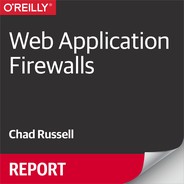Book Description
Firewalls have traditionally focused on network traffic, but with the advent of cloud computing and DevOps, security and operations professionals need a more sophisticated solution to track session state and application layer activity. In this ebook, cyber security consultant Chad Russell covers the current application threat landscape for modern deployment architectures, and explains the evolution of web application firewall (WAF) technologies for countering these attacks.
Developers today increasingly rely on third-party libraries for application development, but many of these libraries include vulnerabilities that attackers actively exploit. With this ebook, you’ll explore the specifics of WAF functionality for filtering, monitoring, and blocking HTTP traffic to and from a web application, and learn how to incorporate WAFs into existing and planned infrastructure, whether it’s a cloud, on-premise, or hybrid deployment.
You’ll examine:
- The Top 10 application layer attacks compiled by the Open Web Application Security Project (OWASP)
- Security vulnerabilities, including business logic attacks, distributed denial of service, online fraud, social engineering, and malware
- WAF core and emergent capabilities, such as XSS and sessions attack protection, SIEM integration, and malware inspection and sandboxing
- Security solutions and technologies that work with WAF, including API gateways, and data loss prevention solutions
